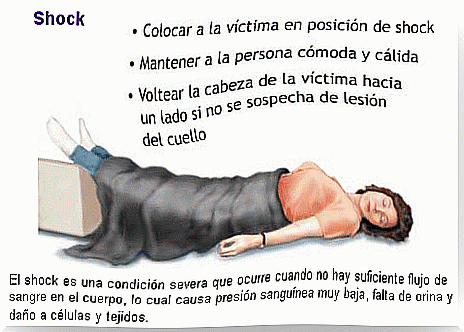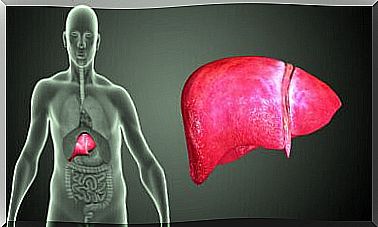How To Deal With Anaphylactic Shock
You may have ever heard of anaphylactic shock, you may even have suffered from it. When a person with a severe allergy is exposed to the substance to which they are allergic, they can suffer a life-threatening reaction called anaphylactic shock.
When anaphylactic shock is triggered, blood pressure drops, the airways narrow, and the affected person may lose consciousness. That is why it is so important to react on time.
Causes of anaphylactic shock

Anaphylaxis is a serious allergic reaction. The immune system secretes certain chemicals – such as histamine – to try to isolate the allergen. The action of this rush of chemicals in the blood can cause anaphylactic shock.
Trigger allergens can be many and varied, and difficult to predict if we have never been exposed to some potential allergens. The most common are:
- Insect stings : especially bee stings
- Medications : antibiotics such as penicillin or some anesthetics
- Foods like:
- Nuts
- Peanuts / peanuts
- Shellfish
- Milk
- Eggs
- Latex
People who have had an anaphylactic reaction before and people with asthma and allergies are at higher risk for anaphylactic shock.
Symptoms of anaphylactic shock
Symptoms of anaphylaxis are experienced before shock and can be:
- Skin reactions : hives and itching, the skin flushes or pales, pinkish spots may appear.
- Swelling : on the tongue and lips
- Gastrointestinal disorders: nausea, vomiting, diarrhea, cramps …
- Difficulty swallowing – feeling that the throat is closing
- Respiratory problems: breathing becomes difficult, there is nasal congestion, coughing, wheezing, chest tightness …
- Cardiovascular problems : the pulse becomes weak and fast
If anaphylaxis is not treated in time, it can lead to anaphylactic shock. The symptoms of anaphylactic shock are:
- Very short of breath, feeling of suffocation
- Dizziness
- Confusion
- Sudden feeling of extreme weakness
- Loss of consciousness
What to do in anaphylactic shock?

If you feel like you are having an anaphylactic reaction, seek medical help immediately. If you have an epinephrine autoinjector, apply it as soon as you start to notice symptoms.
In case the person we are with is suffering anaphylactic shock, the first thing we should do is seek medical assistance. Until the ambulance arrives we can take the following urgent measures:
-
- If the allergic reaction is due to a bee sting, we can remove the stinger from the skin. Do not squeeze the stinger, this can cause more venom to be released.
- We put the person in an antishock position: lying on their back and with their legs slightly elevated so that the blood continues to flow to vital organs.
- If the person has an epinephrine autoinjector, we give it to them.
- If the person has stopped breathing, we perform CPR until medical assistance arrives.
In order for the shock victim to be comfortable, it is also necessary:
- Prevent people from gathering around the person. We clear the space for when the emergency teams come.
- Loosen her clothing so she can breathe easier.
- Cover it to prevent it from losing heat (even if it is summer).
- We took off the rings, the watches, the bracelets. .. if the person is swollen all these objects will bother him.
- We remain calm at all times and wait for medical services to come.









